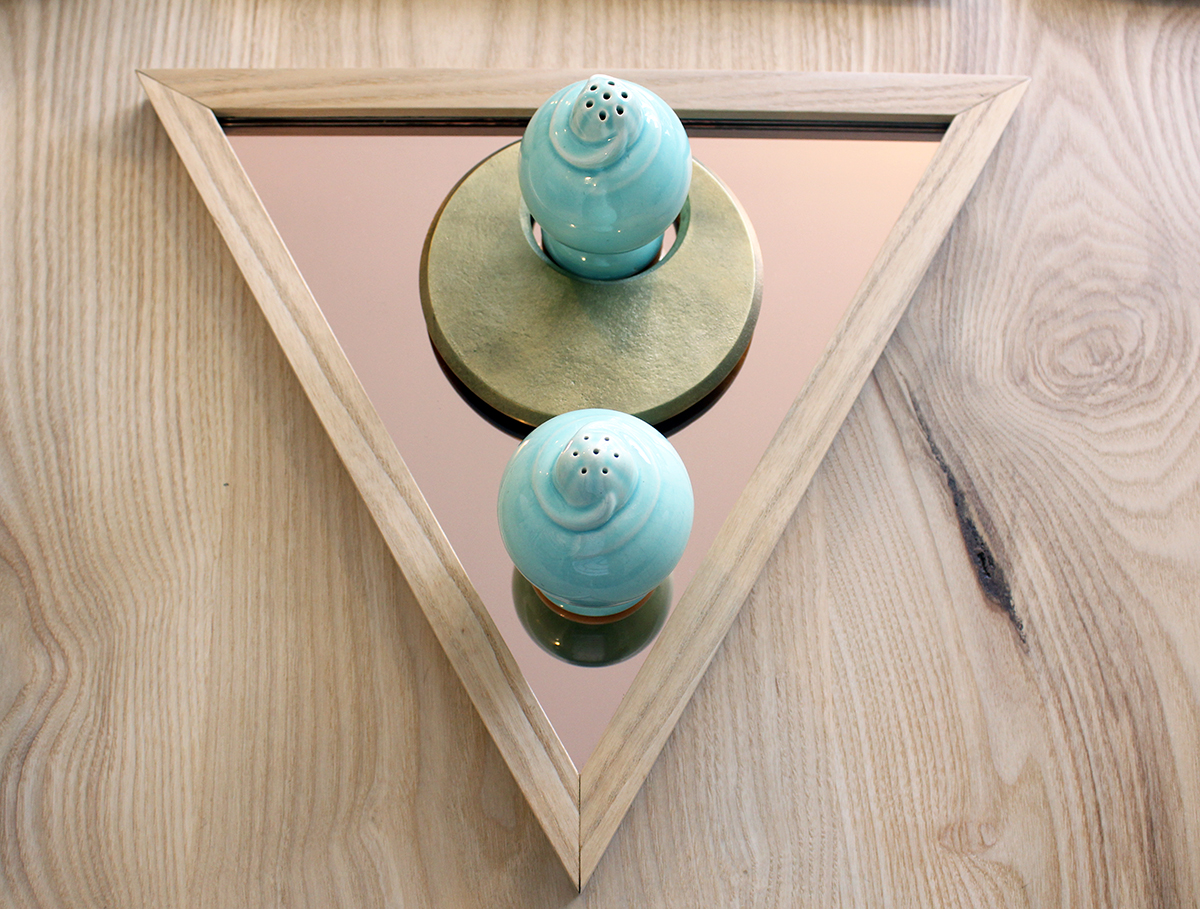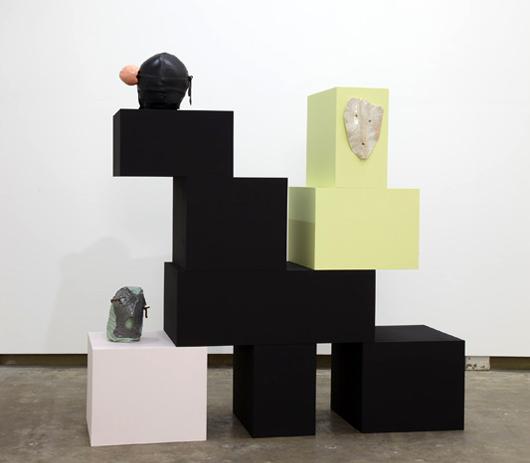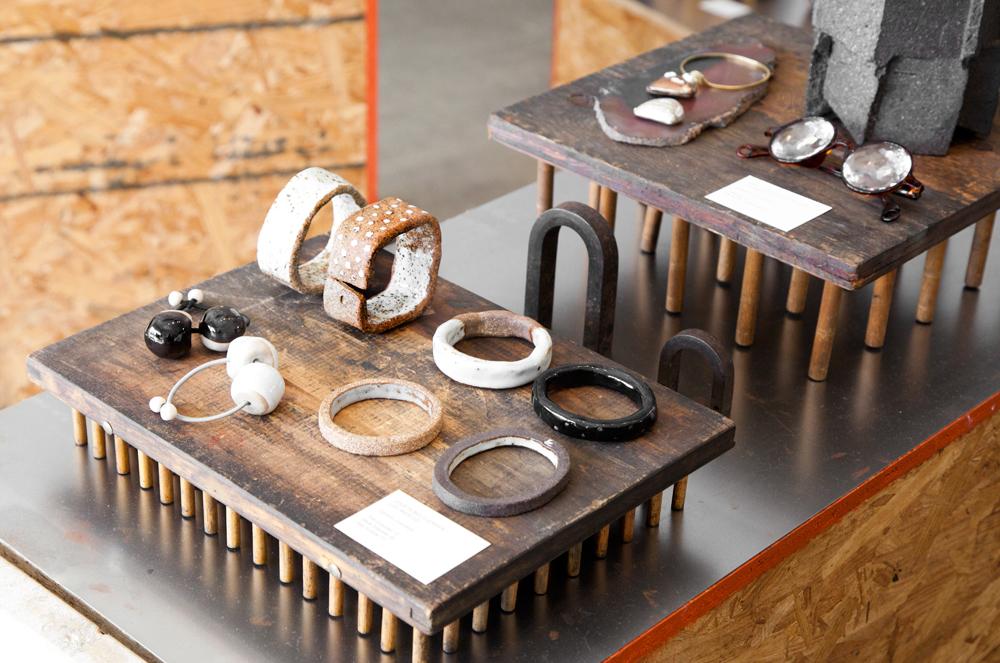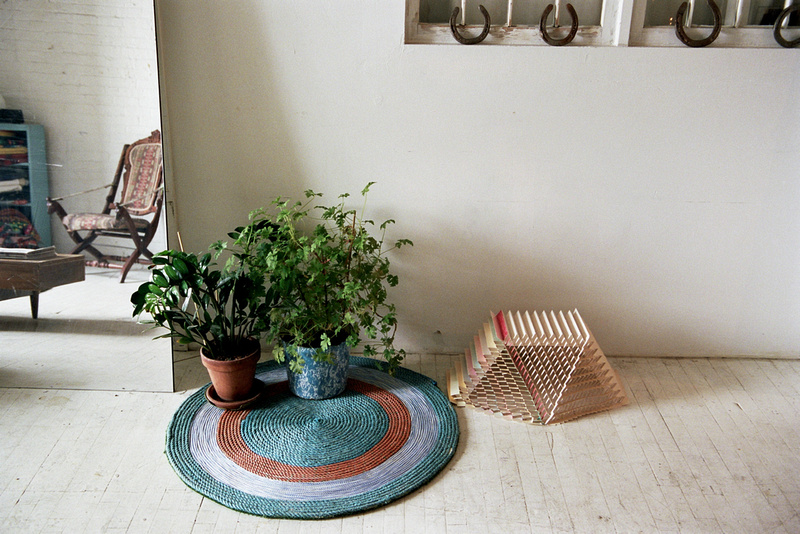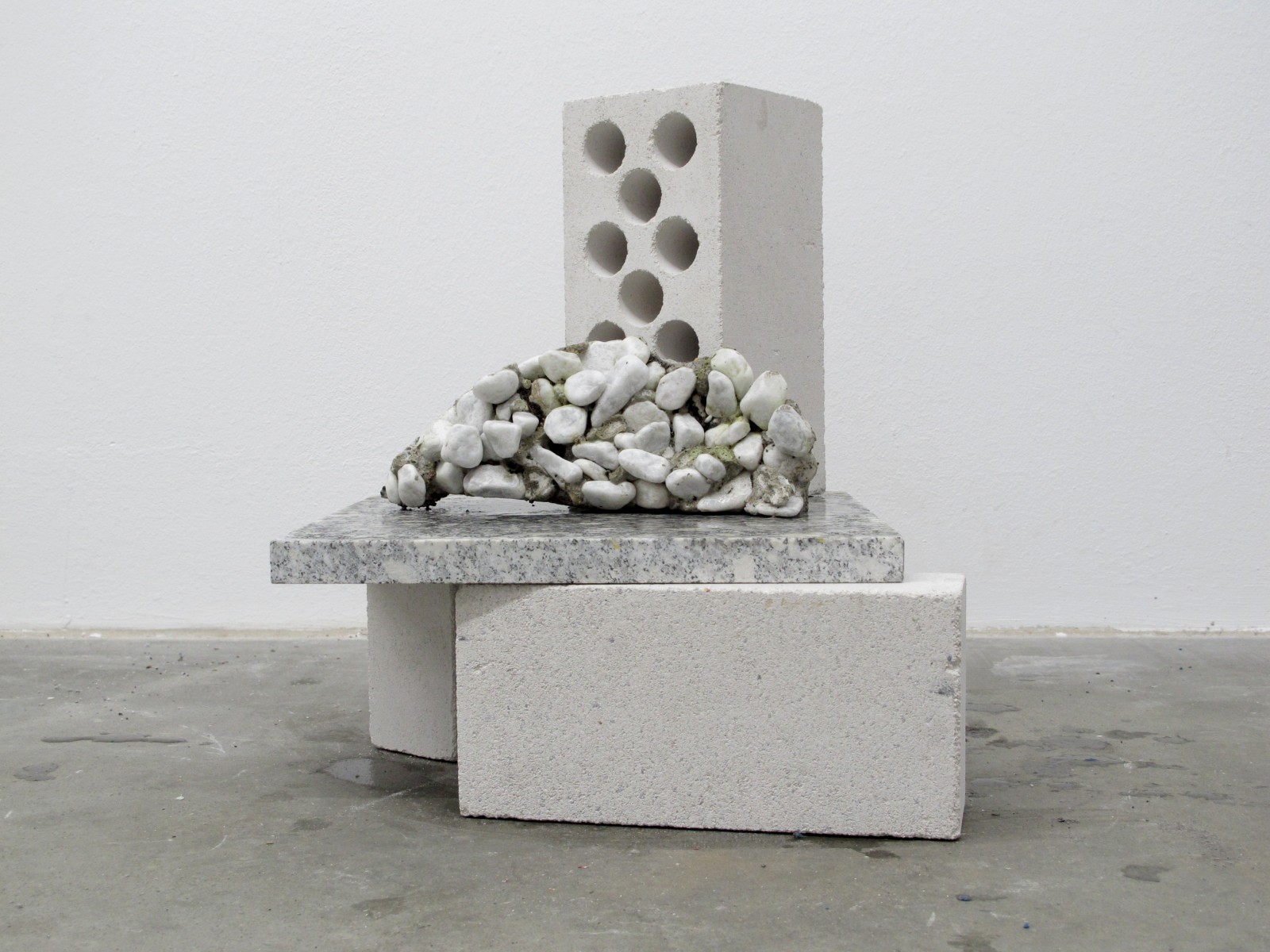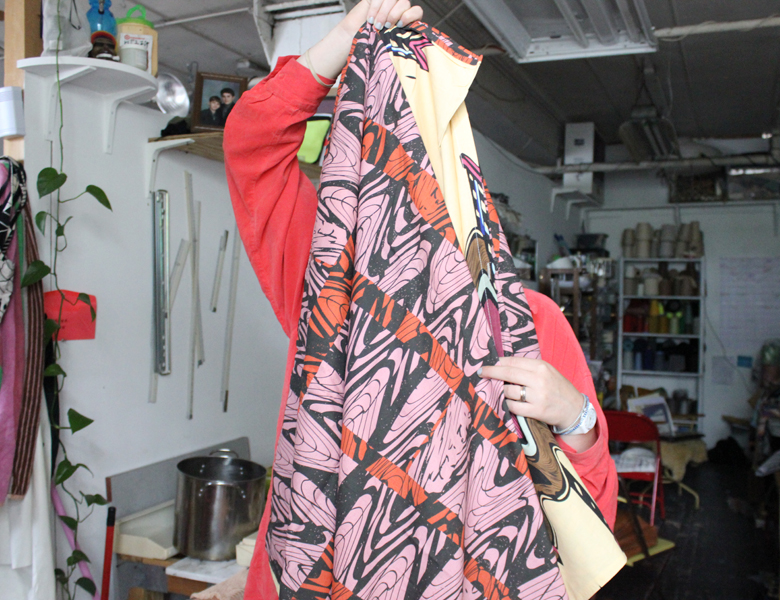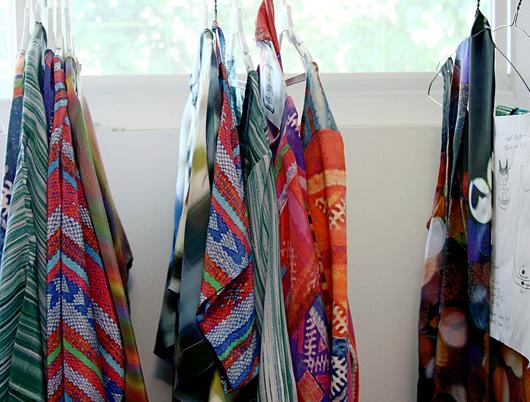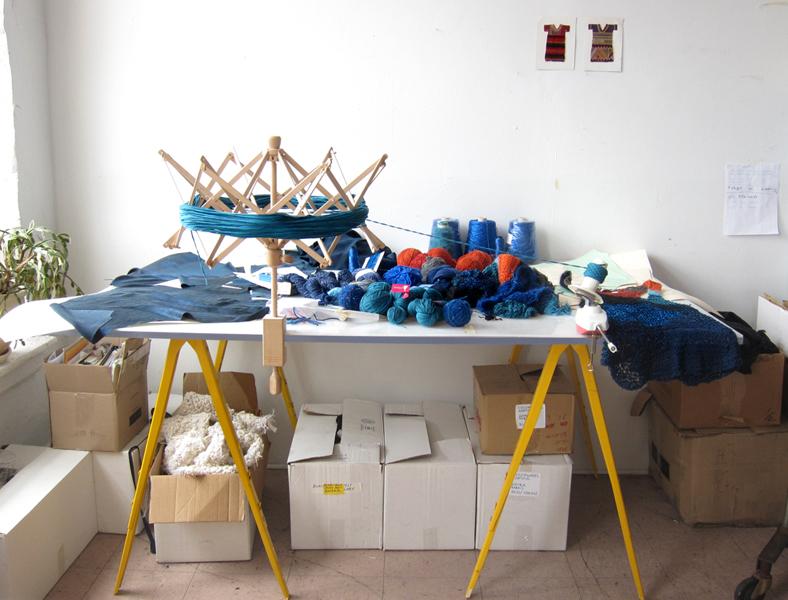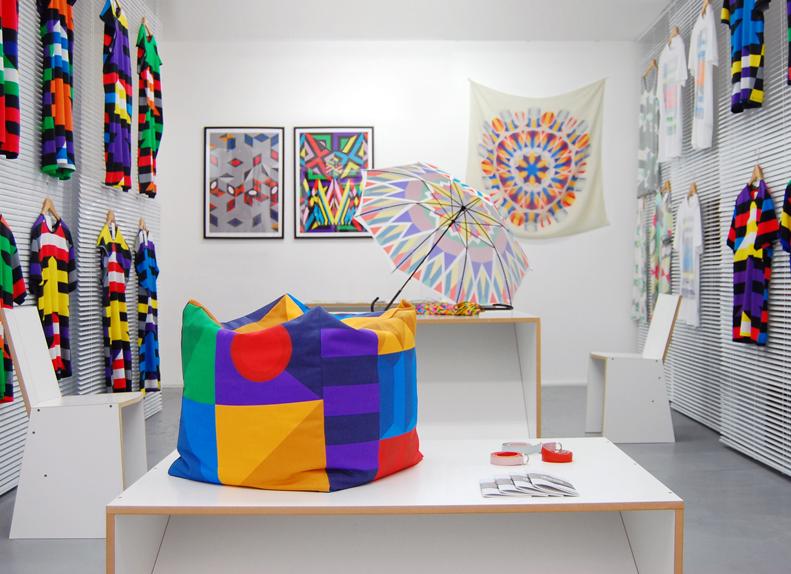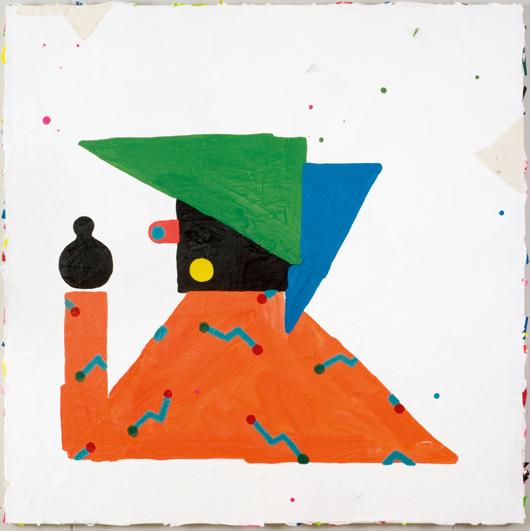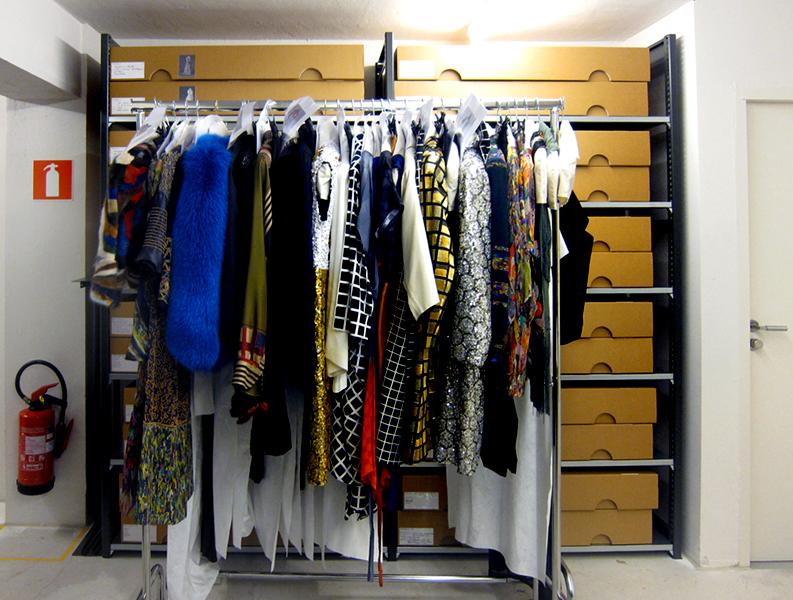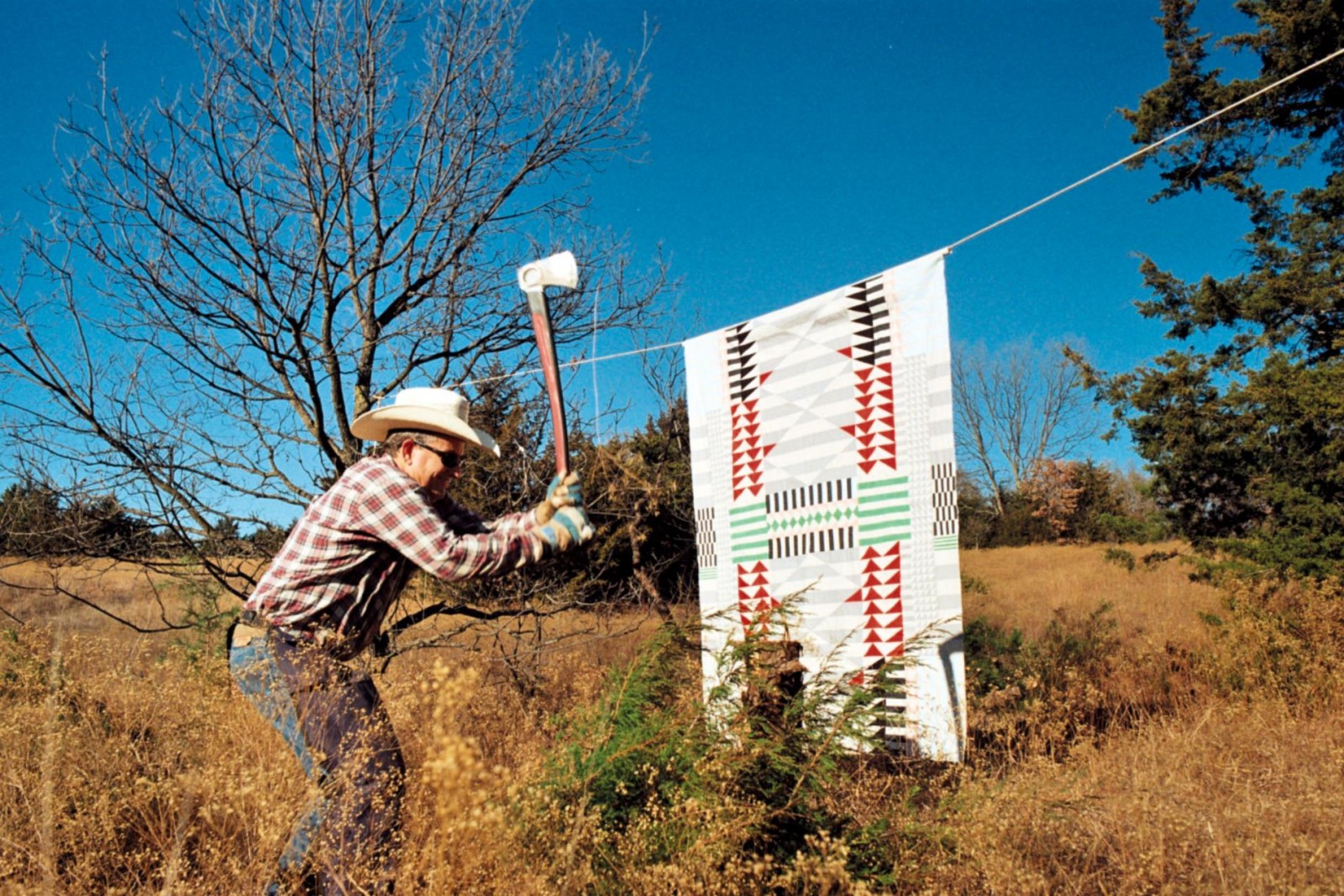
01.29.13
Self Portrait
Meg Callahan is Making Quilts Cool Again
Earlier this month, Jamie Gray of New York’s Matter was named a “game-changer” for his patronage role in the American design scene, and we've got to give the man his credit. Though we pride ourselves on unearthing emerging talents in design, it was Gray who introduced us to Meg Callahan, the recent RISD grad whose coolly geometric, midcentury-meets-Ma Walton quilts were released through Mattermade, his in-house furniture line, last spring. Callahan quickly became one of our favorites, for the way she mixes the traditional with the new, alternating hand-stitching with machine-quilting, color-blocking with digital printing. “I started making quilts because I really like the aesthetic nature of things, but I also like figuring out how things are made,” Callahan says. “A quilt is a functional, 3-D object but it’s also 2-D, a composition of color blocks; you have to figure out the math of how to construct it. The combination of the two intrigued me.” When she approached us with a series of images she shot back home in Oklahoma of her new Caddo quilt — well, we’d have been crazy if we didn’t publish them and get the story behind their making.
